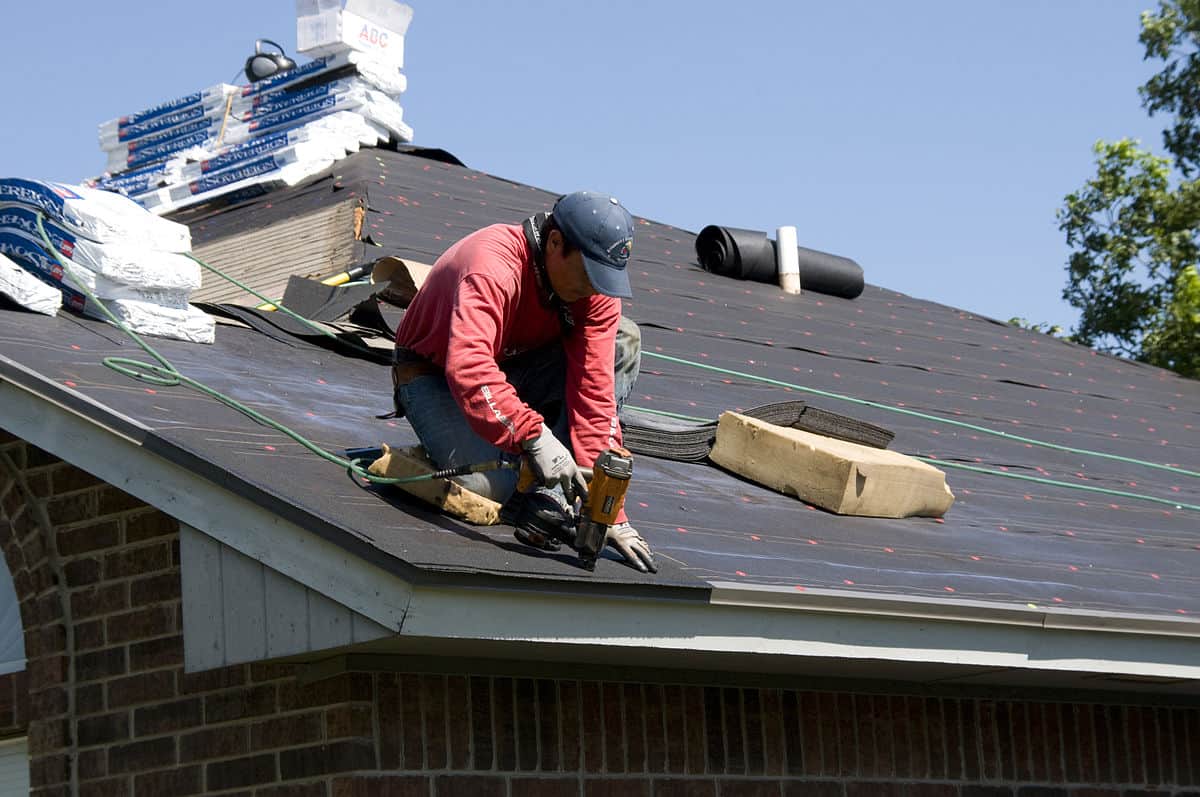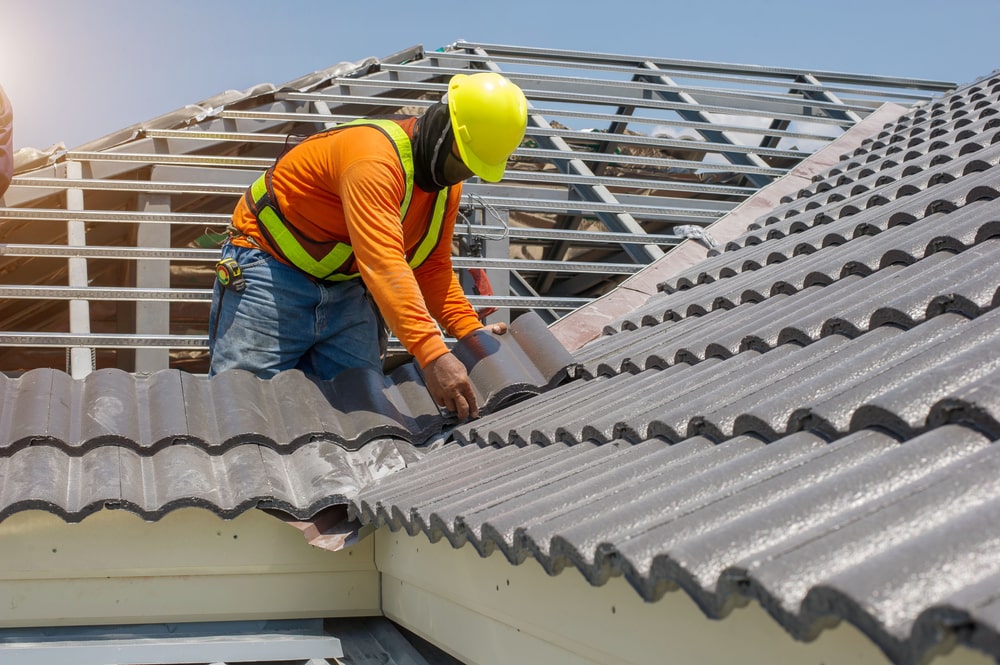Contrasting Prices Among Roofing Companies in Gainesville Florida
Finest Practices for Ensuring Appropriate Roof Ventilation
A well balanced intake and exhaust vent ratio, generally 1:300, plays a pivotal duty, with consumption vents preferably positioned at the reduced side of the roof covering for amazing air access and exhaust vents at the peak for cozy air leave. Keeping insulation away from vents is crucial to avoid airflow limitation.
Understand Air Flow Fundamentals
Effectively comprehending ventilation fundamentals is crucial for ensuring the longevity and performance of roof. Efficient air flow reduces moisture accumulation and temperature level extremes in the attic, both of which can cause significant architectural damages over time. A well-ventilated roofing helps in avoiding usual concerns such as mold and mildew development, wood rot, and ice dams, which can endanger the integrity of the roof materials and the underlying structures.
The key goal of ventilation is to help with the motion of air, enabling for a constant exchange in between the indoor and exterior environments. This equilibrium is achieved via a mix of consumption and exhaust vents that collaborate to keep optimal air movement. Intake vents, commonly located along the eaves or soffits, enable fresh air to get in the attic room room, while exhaust vents, typically located at or near the roof covering ridge, make it possible for hot, humid air to escape.
Secret elements influencing the performance of roofing system air flow consist of appropriate positioning, ample sizing, and making certain that both intake and exhaust vents are unblocked. Regular evaluation and maintenance are vital to determine potential blockages, damages, or ineffectiveness in the ventilation system, consequently securing the roofing's efficiency and sturdiness.
Kinds of Roof Covering Vents
Roof covering vents play a vital function in keeping effective attic air flow and, by extension, the overall health of the roof covering system. Various kinds of roof vents are offered, each with one-of-a-kind benefits customized to particular roof requirements. Ridge vents, for instance, are mounted along the roof's optimal, enabling warm, moist air to leave from the attic. They offer constant ventilation and mix flawlessly with the roofline, making them both efficient and cosmetically pleasing.

Soffit vents are set up under the eaves and operate in tandem with roof covering vents to make certain a balanced intake and exhaust system. By permitting cooler air to get in from below, soffit vents facilitate the expulsion of warm air via top vents. Gable vents, situated on the exterior walls of the attic room, offer an additional reliable service, particularly in homes with saddleback roofs.
Analyze Your Existing Air Flow

Next, consider the age and condition of your roofing products and air flow components. Older systems might not conform with present structure codes or might have weakened over time, minimizing their efficiency. Conduct a detailed exam to determine any type of indicators of deterioration, such as rust, damage, or spaces that can jeopardize the system's performance.
Additionally, determine the attic room temperature level and moisture degrees. High temperature levels Learn More Here and moisture can show insufficient ventilation - roofing companies gainesville florida. Use a hygrometer and thermometer to get exact readings, contrasting them with outdoor conditions. Persistent discrepancies recommend potential issues that require dealing with.
Installation Best Practices
Efficient installment of roof covering ventilation systems is extremely important for making certain ideal efficiency and longevity. Proper setup starts with understanding the details air flow needs of the roof and the structure it covers. This includes determining the right proportion of intake to exhaust vents, typically sticking to the 1:300 policy, which specifies one square foot of ventilation for every 300 square feet of attic flooring room.

The positioning of vents is similarly crucial. Consumption vents must be set up at the roof's reduced side, commonly in the soffits, to enable amazing air to enter. Exhaust vents, on the various other hand, should be mounted near or at the roof covering's peak to help with the leave of warm, moist air. This develops an all-natural airflow that helps preserve temperature and dampness balance within the attic room area.
Seal all vent connections meticulously to avoid air leaks and potential water seepage. Usage top notch products and adhere to manufacturer guidelines to make sure sturdiness and effectiveness. Additionally, incorporating ridge vents with baffles can significantly enhance airflow efficiency by preventing wind-driven rain and snow from entering the attic room.
Eventually, exact installation of roof covering ventilation systems minimizes potential concerns such as mold and mildew development, ice dams, and structural damage, making sure the roofing system's honesty and the building's overall health.
Routine Maintenance Tips
Uniformity in upkeep methods is essential to making sure the long-lasting performance of roof covering ventilation systems. Regular evaluations are vital, preferably performed biannually-- in the springtime and fall. During these assessments, guarantee that vents are totally free of debris, nests, and other blockages that can hamper airflow. Look for any signs of dampness buildup or mold and mildew, as these can indicate inappropriate ventilation or leaks (roofing companies in gainesville visit our website florida).
Utilize a soft brush or a vacuum cleaner to get rid of dirt and particles from consumption and exhaust vents. Be cautious not to damage the vent displays or louvers during the procedure.
Appropriate insulation is just as important. Make certain that attic room insulation does not block the vents, as this can seriously limit air movement. If any kind of insulation has shifted or resolved, reposition or change it to maintain an efficient barrier.
Lastly, replace any kind of damaged or missing elements without delay. Broken vents, broken shingles, or worn-out flashing can all add to poor air flow and needs to be addressed immediately. Regular upkeep guarantees that the roofing ventilation system functions optimally, thus prolonging the life expectancy of the roofing system itself.
Verdict
Guaranteeing correct roofing air flow is vital for keeping the efficiency and sturdiness of a roof covering system. Adherence to the 1:300 intake and exhaust vent ratio, paired with the strategic placement of vents, is important.
A my site balanced intake and exhaust air vent ratio, frequently 1:300, plays a pivotal role, with intake vents ideally placed at the reduced edge of the roof for cool air access and exhaust vents at the height for cozy air departure. Consumption vents, commonly situated along the eaves or soffits, enable fresh air to get in the attic space, while exhaust vents, frequently located at or near the roofing system ridge, enable warm, moist air to leave.
Soffit vents are set up under the eaves and work in tandem with roofing vents to guarantee a balanced consumption and exhaust system. By permitting cooler air to go into from below, soffit vents help with the expulsion of warm air through upper vents. Adherence to the 1:300 consumption and exhaust vent ratio, coupled with the strategic positioning of vents, is necessary.